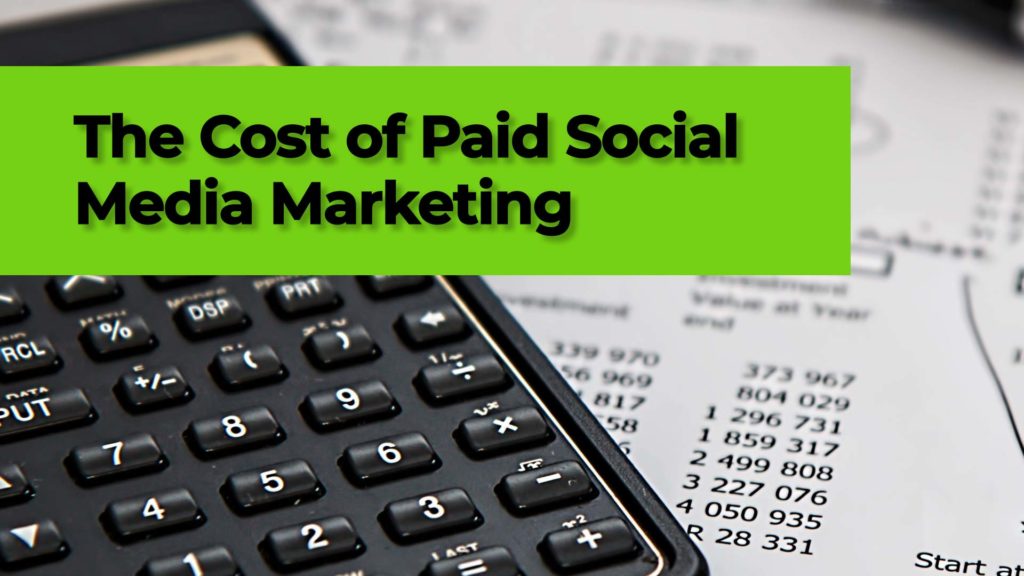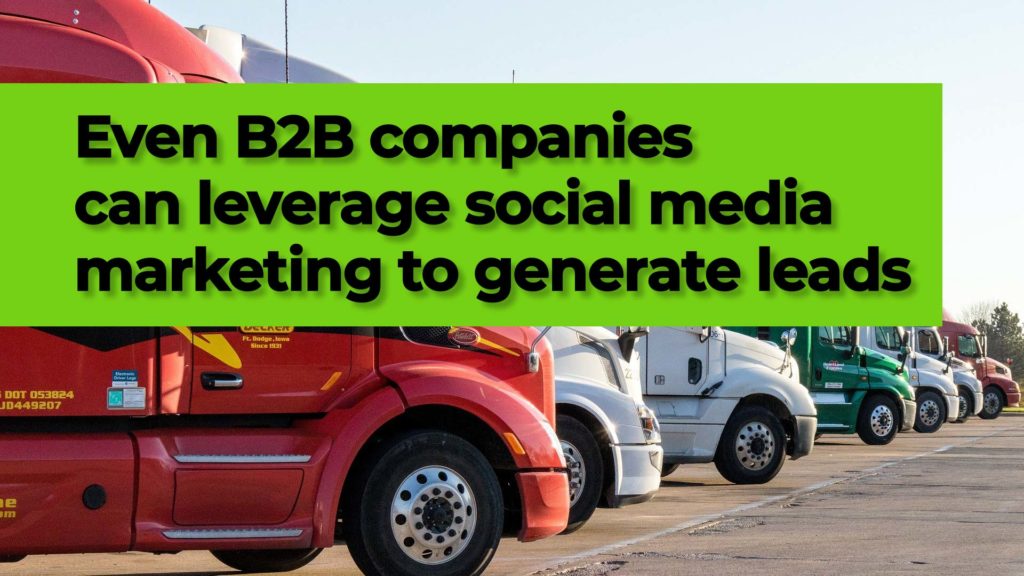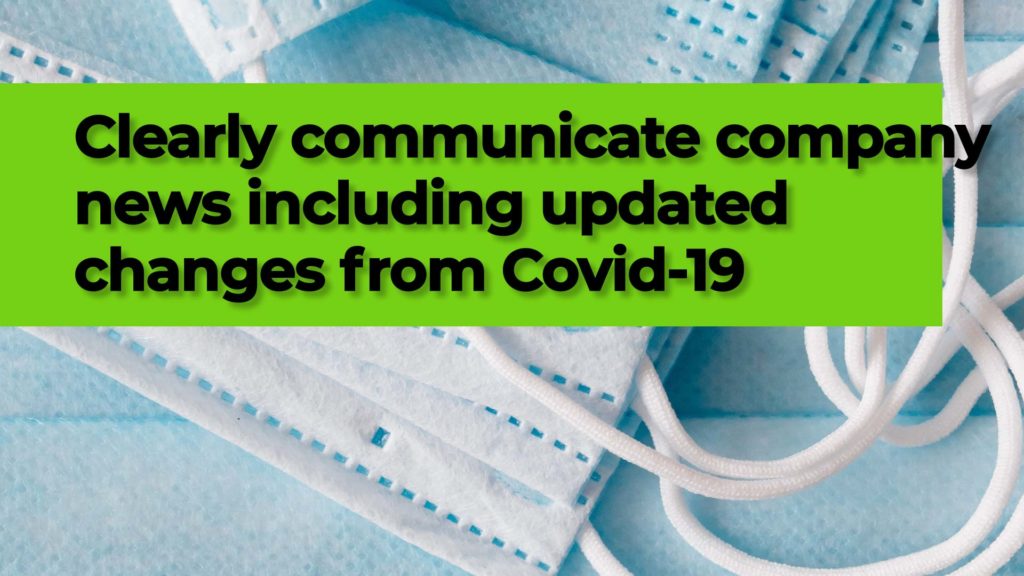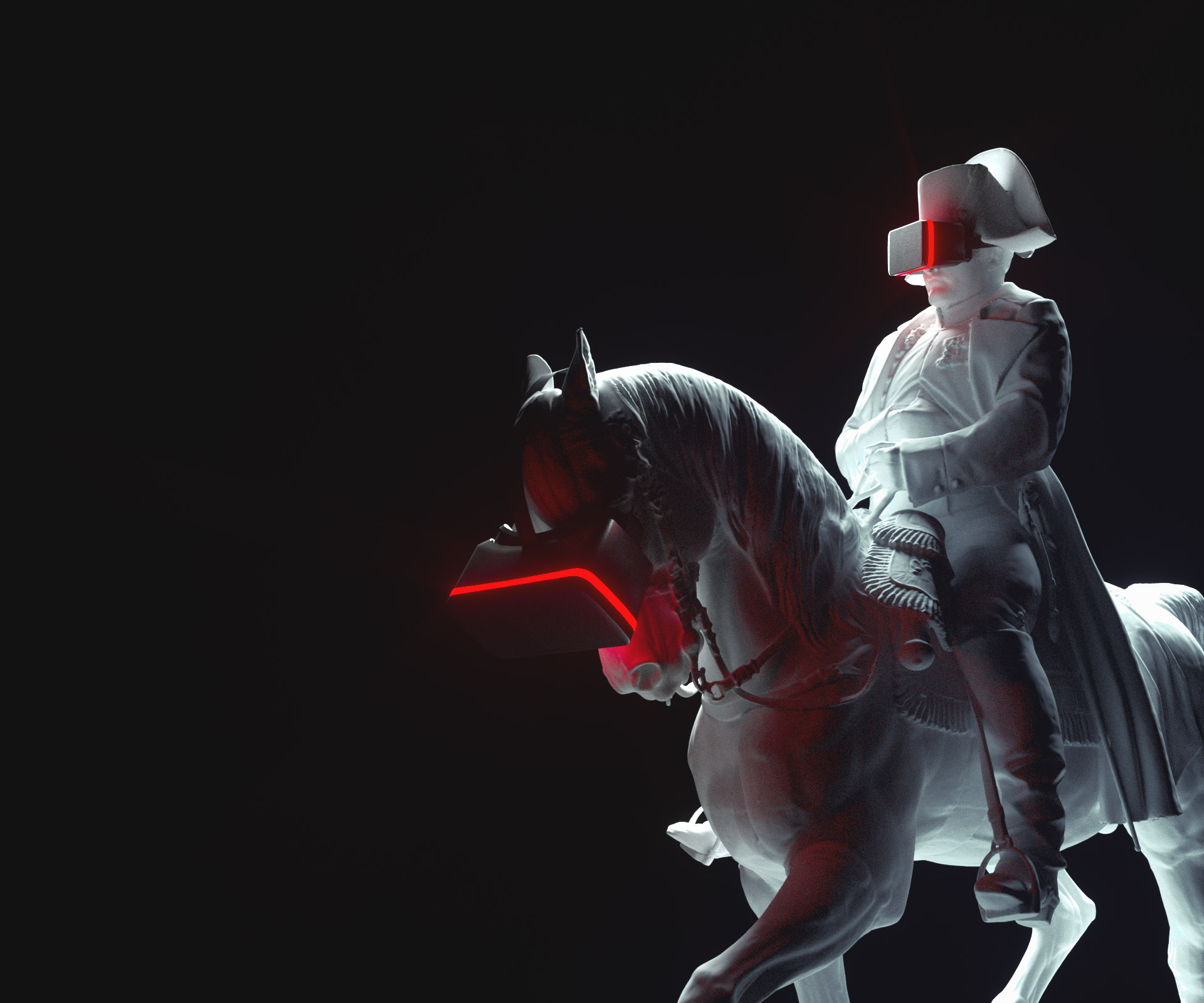
Social Media Marketing is an important tool for marketers to effectively communicate with the audience and drive sales.
But how much does it cost to use social media as a marketing tool?
The total cost can vary from business to business and how you choose to run your campaign.
With so many social media platforms and types of content, a choice between paid and organic, video vs static, etc it can get complicated!
One of the major drivers of the most efficient way to advertise on social media is simply the type of business that you are. A B2B engineering firm will use social media advertising in a much different manner than a B2C online store or a local coffee shop.

The industry, and how your customer buys from you can change what might work and what would be a waste for your marketing plan.
Know your Audience
If there’s one repeating piece of advice we recommend in nearly all our articles, it’s that you need to know your audience in order to create an effective ad campaign. It’s extremely important to at least somewhat know the type of customer that buys from you and why. From here, you can A/B test your way to knowing even more about what your audience responds to and what they don’t.
The more you understand about your audience, the more relevant you can make your ads, which will increase the number or percentage of your audience that will click on them or even make a purchase. Ad relevancy is higher correlated with a strong return on investment for your marketing campaign.
A/B testing inside ad campaigns should always be used as a method to refine your assumptions about your audience and better identify what they respond to. A/B testing in paid PPC campaigns should not be optional, any paid campaign should be running some type of A/B test, and over time you should try new forms of visual imagery, offers, ad copy, etc.
Organic Posts
Social media advertising using organic posting is technically without cost. For a small business owner, there is no reason why you can’t create the vast majority of social media postings without agency support.
These could be anything from showing off new menu items or products, promotional sales, updated holiday hours.
Then featuring customer reviews is another great way to drive engagement and help to promote your image.
However, at times, utilizing a professionally made video or static content can boost the quality and engagement of posts. A mix of outsourced content creation and content created internally is a common path for many smaller businesses.

Facebook in particular has started to nearly require businesses to promote a post to even show the post to all the business’s followers. While this is frustrating,
Facebook Boosted Posts vs Paid Ads
One aspect of Facebook’s marketing options that can be confusing is picking between boosting posts and creating actual paid ads. In many ways, they seem so similar, but their uses can be different.
For Boosted posts, the process is incredibly simple and lets you easily create a simplified audience and enter your desired budget. Keep in mind for boosted posts, you are doing just that – amplifying the viewing of a post to your own audience and to people that have not “liked” or even seen your page.
This can be a great tool to boost brand awareness as your posts which are boosted will be seen by a wider range of people and your brand will get more views. Most would consider this a “brand awareness” strategy, vs trying to generate sales on a specific item or solicit a direct response.
For important announcement posts, it can make sense even for small businesses to run a boosted post-campaign, and you can pick a budget that can be quite low if you want to experiment or try it. Many larger brands boost a significant portion of their posts just to get more views on it. Also, larger brands typically spend more budget creating each post, so it makes sense to maximize their spending that they also boost them.
While targeting isn’t quite as detailed as truly paid ad campaigns, you still have a number of options that can change who will see the paid boosted posts. Once you get comfortable boosting a post or two, you should start experimenting with creating “custom” audiences, which give you a much greater level of control over who the paid posts will be visible to. In general, it makes sense to boost either important posts that have great content and widely useful info, or posts that are already getting likes and comments. The more likes and comments on a post, the more likely others will like and comment on it.
It’s important to always look through the results of a boosted post-campaign, and make sure that you don’t by accident leave it running on an old post.
In general, the more engaging the content, the better the boosted post will perform. Often this means the post looks good, with vivid or interesting imagery, is an especially interesting subject matter that is relevant to your audience or that it is a video. In general, video posts will almost always perform better than static media posts.
Facebook PPC
Facebook’s Ad campaigns are more similar to Google’s Adwords than the boosted post option and are considered a paid PPC digital marketing channel. Facebook offers a wide range of options for how it’s ads are displayed, the types of actions they are trying to get from the audience, and a wide targeting options.
There are several key metrics for Facebook PPC Marketing
CTR -This is the percentage of people that click on your ad vs the number that see it. Essentially measuring the efficiency of a particular ad and a great metric for A/B testing. Often target CTR can be somewhere between 2-5% depending on industry etc.
Potential Reach – This is a number of active users monthly that fall within your targeted campaign metrics. It’s interesting to see this number drop as your targeting settings become more specific.
CPC – Cost per click is used to see how expensive it is to generate a click. This varies significantly depending on the keywords you are using in the campaign, for example, a winning price per click of “New Honda” would be quite high whereas a very nice industry term could be much lower due to less competition. This is Facebook, or Google letting their advertising clients bid against one another for the right to display their ads.
CPA – Cost per Acquisition is the cost that it takes to convert someone to a paying customer or to download an app etc.
Paid PPC whether through Facebook, Google, Linkedin or others are powerful tools that most major brands use. They all offer specific targeting tools that can be tweaked over time to deliver more and more efficient use of your ad buy budget. Setting up campaigns with certain ad sets and imagery can be as simple or complicated as you want. Often larger brands with more sophisticated media buying and digital marketing teams using many adsets with dozens of specific ads, all in an effort to better refine their ad targeting.
Lookalike audiences are also a widely overlooked but incredibly effective tool. In short, on Facebook, a lookalike audience will take the data from a customer set, or email and then automatically find others that fit a similar demographic. This demographic data can range from the type of job to their age, gender, geographic location, interests, etc. You can also integrate a Facebook pixel into your website, which will then use the traffic to your website as a starting point for creating a lookalike audience.
It’s an incredibly important tool that will let you widen your targeting. Typically we’d recommend first using a more basic campaign to learn more about what type of ads work with your audience, then over time you can expand your reach.
How much to spend on ads per month?
Most campaigns when new, with new ads, new targeting, new products, or a new effort by a company can start media buys as low as $5-10 a day. Once you refine and better understand the keywords and ad campaign parameters you can start to ramp the budget up so long as you are maintaining a profitable campaign, and continue to test and refine it.
The early stages of any campaign should be to test how well your campaign parameters are set up and keywords are correct. It’s important to know that even at $10 a day, depending on the industry and keywords, it might not be a 100% conclusive test result simply due to the potentially low volume of clicks and impressions.
Ad Creative cost:
Ad creative can range on average between 10-30% of total campaign cost. Often spending a little more to have better-looking ads will result in higher CTR, lower CPA and thus higher overall ROI on ad spend.
The range is highly variable when it comes to static ads, ranging anywhere from $50-500 per image depending on the complexity of the visuals, photography, and animation needs. Facebook video ads also range widely, anywhere from $500-1000 for something very basic, to $5000-15000 for a more fleshed-out video ad or explainer video.
Want to improve your content marketing and create more effective social media campaigns? CONTACT US
Volan Media is a top Knoxville, Tennessee video production and marketing agency with years of experience working on a range of projects, everything from 1800s steam railway locomotives to the most cutting edge cancer treatments. If you turn on the tv in East Tennessee, chances are you’ll see one of our ads! We are a top Knoxville, Tennessee video production firm, with projects commonly being used for explainer videos, broadcast/cable tv ads, digital ads, recruitment. Volan Media also is a top Knoxville Tennessee virtual Reality video production firm, having made a large number of 360 videos and VR productions across a range of industries, including various tradeshow VR 360 videos, treatment and branding VR videos, and VR experiences.


